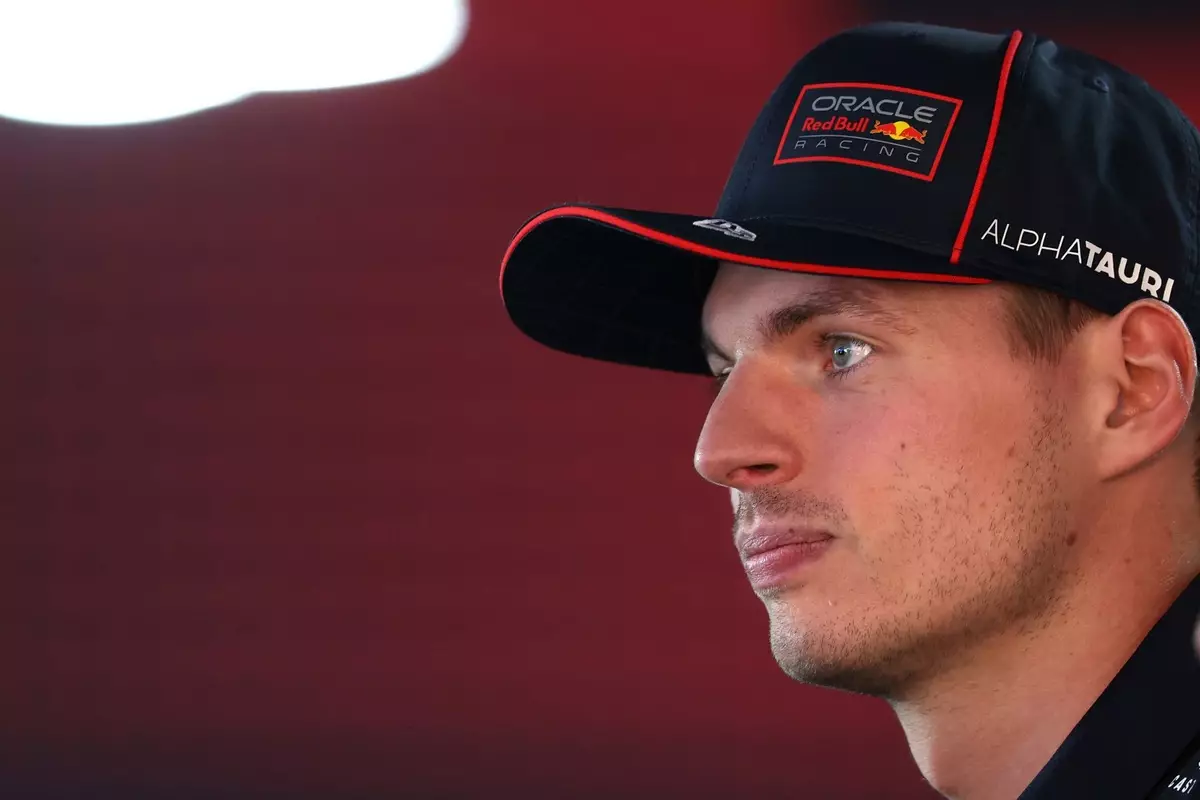Formula 1, the pinnacle of motorsport, often witnesses teams in fierce competition, showcasing not just speed but also strategic ingenuity. In recent races, the spotlight has decidedly fallen on McLaren, specifically its burgeoning talent, Oscar Piastri. Red Bull, historically a dominant force, is now facing the unrelenting challenge of closing the performance gap to its rivals. Max Verstappen has openly acknowledged the daunting task ahead, emphasizing that the disparity in race pace between Red Bull and McLaren is not something that can be remedied swiftly, despite anticipated upgrades.
The Miami Grand Prix served as a stark illustration of this evolving dynamic. Despite securing pole position, Verstappen’s race performance revealed vulnerabilities that McLaren capitalized on masterfully. Finishing a staggering 40 seconds behind the race winner highlighted the stark reality: the evolution of car technology and race strategies has created a competitive ecosystem in which Red Bull must adapt rapidly to avoid being left in the dust.
Pacing Upgrades: The Optimistic Approach
As Red Bull prepares for the upcoming European leg of the season, significant upgrades are on the horizon. With a focus on improving the RB25, a newly designed floor is set to enhance the car’s performance. Nonetheless, Verstappen’s recent comments suggest a cautious optimism; while he acknowledges incremental improvements from ongoing upgrades, he explicitly dispels notions of an overnight transformation in pace. His words resonate with a thread of realism that echoes within the team’s culture: change in F1 is a gradual process, molded by meticulous engineering and strategic foresight.
Verstappen’s perspective is not merely a reflection of his personal hopefulness but an honest appraisal of the intricate mechanisms at play within competitive racing. The advancements that might bridge the performance differential are complex and cannot simply be expected with a single tweak. The coalition of technology, driver skill, and racing strategy intertwines to create outcomes that often defy predictions.
The Tech Directive and its Implications
Adding another layer of intricacy to the competition is the impending technical directive from the FIA, aiming to impose stricter load tests on front wings. While this move is anticipated to impact the aerodynamic fabric of all participating teams, there is a palpable sense within Red Bull that these changes may not yield the transformative impact needed to reclaim lost ground. The race in Miami established a benchmark, where the performance gap stretched beyond mere aerodynamic finesse—it signified a fundamental differential in tire management and race pace.
As teams scramble to adapt to the FIA’s new regulations, the overarching question remains: will this directive recalibrate the competitive landscape? Verstappen’s retort, dismissing expectations of significant gains, echoes a sentiment that merely adhering to regulatory changes cannot yield immediate benefits. The experience of navigating these evolving directives requires not just compliance, but a nuanced understanding of how they interact with each team’s unique setup and design philosophy.
Tire Management: The Hidden Challenge
Perhaps the most critical aspect of Red Bull’s struggle against McLaren lies in tire management—a quintessential element of racing that can define the outcome of any Grand Prix. McLaren’s relative ease with rear tire degradation during races stands in stark contrast to Red Bull’s current challenges. Verstappen’s reflection on understanding this phenomenon underscores the complexity of racing dynamics and the importance of adaptability.
Without a clear understanding of why McLaren effortlessly manages tire wear while Red Bull struggles, the team’s path to closing the gap may remain elusive. Verstappen highlights the intricacies of tire performance across various tracks, suggesting that each venue presents its own unique challenges and opportunities for improvement. This inconsistency underscores the need for Red Bull not just to innovate with hardware but also to refine its strategies and driver input in a nuanced manner.
Ultimately, as Red Bull looks toward the next races, particularly the upcoming challenge in Imola, the integration of upgrades and the adaptation to regulatory changes will be critical. However, the core issue of tire management remains a puzzle that Red Bull must solve if it hopes to regain its competitive edge. This challenge of harmonizing technology with strategic thinking might just define the trajectory of Red Bull’s season, as it seeks to not merely keep pace with McLaren, but to reclaim its status at the pinnacle of Formula 1.

